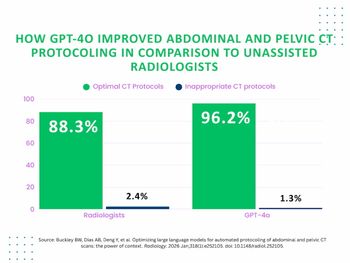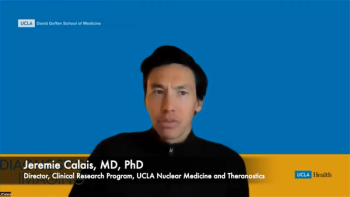
Report from SNM: Images of the Year cover molecular imaging from head to toe
Dr. Henry J. Wagner Jr. has selected two images, a PET/CT scan showing the early metastatic spread of tumor in a patient’s ear and a SPECT/MRI study of osteomyelitis in another patient’s foot, to exemplify the diagnostic capabilities of nuclear medicine as the 2008 Society of Nuclear Medicine Image of the Year.
Dr. Henry J. Wagner Jr. has selected two images, a PET/CT scan showing the early metastatic spread of tumor in a patient's ear and a SPECT/MRI study of osteomyelitis in another patient's foot, to exemplify the diagnostic capabilities of nuclear medicine as the 2008 Society of Nuclear Medicine Image of the Year.
Wagner, a professor of nuclear medicine at the Johns Hopkins University School of Public Health, based his selection on how the two images capitalized on what he calls the four technical pillars of nuclear medicine: PET, SPECT, CT, and MRI.
The PET/CT image acquired by Dr. Stefano Fanti, a professor of nuclear medicine at the Policlinico S. Orsola-Università di Bologna in Italy, uncovered hidden cancer in a patient's head.
The fused SPECT/MR image acquired and processed by Dr. Karin Knesaurke, an associate professor of radiology and nuclear medicine at Mount Sinai Medical School in New York City, enables her to appreciate the full extent of disease in a foot.
Together, the two images symbolize nuclear medicine's contribution to diagnosis of disease throughout the body and its increasing use of anatomic and metabolic information from hybrid modalities, Wagner said.
Fanti's study was performed with gallium-68-DOTA-NOC. The PET probe binds to somatostatin receptors that are abundant in neuroendocrine tumors, like the one depicted as the bright green hyperintensity above the left orbit in the 3D CT image of the patient's skull.
The study asked if the patient had additional disease. Its presence was revealed in the image as high-intensity lesions in the pituitary gland and a neck lymph node.
The image also illustrates improvement Wagner has seen in the aesthetic characteristics of the nuclear medicine images.
"The images get prettier and prettier every year," he said.
Knesaurke's study employed indium-111-labeled white blood cells. The SPECT results were fused electronically with images acquired in a separate MRI procedure. Physicians understood before the evaluation that the 24-year-old patient was receiving treatment for type 2 diabetes and had a foot infection. Imaging was ordered to determine if she had osteomyelitis as well.
The localized distribution of labeled white blood cells depicted in the image indicates both soft-tissue and bone involvement indicative of osteomyelitis and a soft-tissue infection.
Newsletter
Stay at the forefront of radiology with the Diagnostic Imaging newsletter, delivering the latest news, clinical insights, and imaging advancements for today’s radiologists.




























